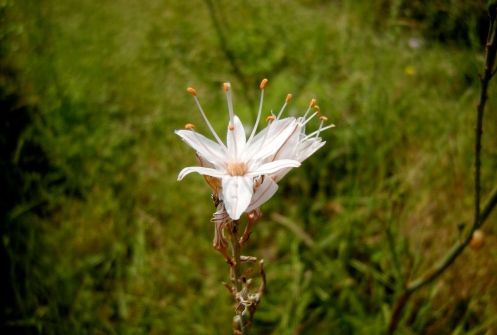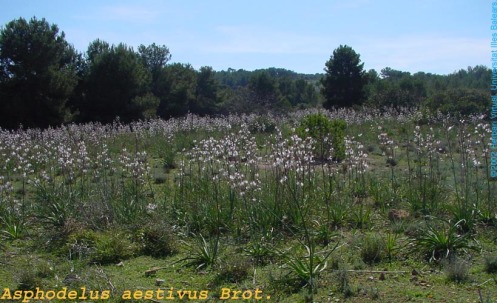The Common Asphodel (Asphodelus aestivus)
The Common Asphodel (Asphodelus aestivus) is a rather beautiful wildflower. It is delightful, pleasing and subtle . This plant is very prolific in the Balearic Isles and it is flowering right now. This plant has one of the earliest recorded histories of any species, having been given a detailed description in Opera et Dies in the 8th century B. C. Good old Homer knew the plant as well. In his Odyssey, the flower is subject of an eulogy: ‘The heroes of Elysium, as living in a meadow covered with Asphodel’.
And the Asphodel is useful as well; bees just love the flower’s nectar and find it useful for making delicious wildflower honey. Mallorcan shoemakers find the pulverized plant’s dried tuber rhizomes useful for making a strong glue when mixed with cold water. The same glue is also used in the process of bookbinding. The Asphodel fibre is furthermore used in the making of cord for seat coverings of chairs and stools.
Parts of the plant are edible as well. The root is rich in starch. Dried and boiled in water it yields a mucilaginous matter which can be mixed with grain to make a nutritious bread. Boiling destroys the acrid principle in the tubers, rendering them quite pleasant to eat. The flowering stalk can be eaten when cooked and the seeds can be eaten when roasted.
Greeks and Romans used different parts of the plant in the treatment of several diseases, but in modern medicine, the Asphodel does not seem to be used any longer. The tuberous root, gathered at the end of its first year, is said to be acrid, antispasmodic, and diuretic.




I am so relieved to see this is edible, as when I first moved to Mallorca, I mistook it for wild asparagus and picked it and blanched it and tossed it in an omelette for my young family.